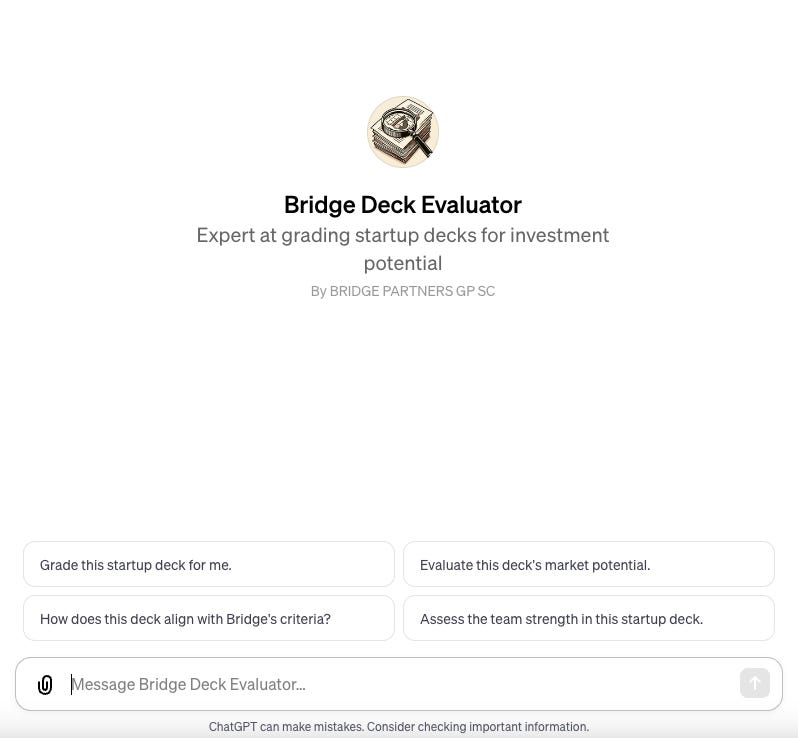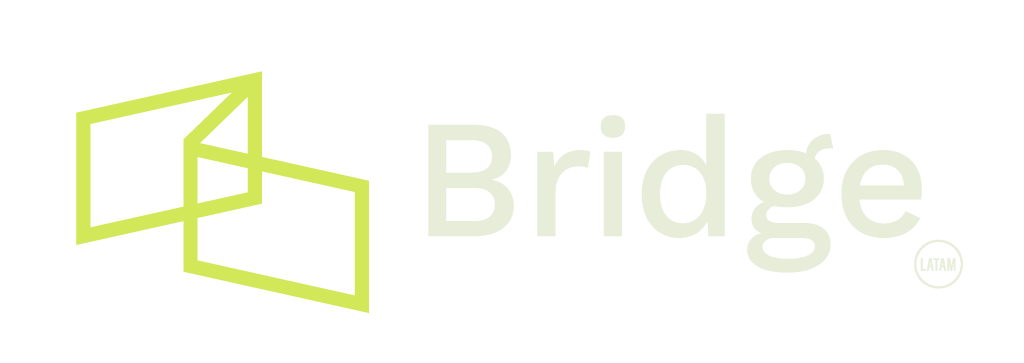By Fran García
Since Open AI released the version of GPT-4 with the possibility to create custom GPTs we have been playing with them. OpenAI’s introduction of customizable GPT-4 models has opened new horizons for various industries, including venture capital. These tools offer vast potential for enhancing productivity and decision-making processes. They are straightforward to use and implement, making them accessible to a wide range of users. In this guide, I’ll outline how venture capital funds can create their own GPT model.
First, we will go step by step of how to create a GPT:
1. Go to ChatGPT (you should have the paid version)
2. Click on Explore GPTs and then in the “+ Create” button.
3. In the “Configure” tab you can name the GPT, add a description and create the instructions.
4. You can add all the files (Proprietary Information or not) that will be the main component of the GPT.
At Bridge we created a couple of GPTs, one for assessing decks and other to help us write investment memos.

The initial tool we developed, named Bridge Deck Evaluator, was designed to assist in extracting crucial insights from various decks. Additionally, it was programmed to assign ratings to these decks. For instance, we incorporated a feature that evaluates and grades each aspect of a deck, ranging from the market size to the go-to-market strategy. This functionality aids in our day to day at Bridge.

How did we achieve this? We programmed the GPT to assign a score ranging from 1 to 5 for each category identified in a deck, with the scoring contingent on the provided information. Take, for instance, the market size category. Here, if a deck indicates a market size of less than $1 billion, it receives a score between 1 and 2. Conversely, a market size exceeding $10 billion is awarded a top score of 5. This scoring mechanism is consistently applied across various key categories including market potential, product uniqueness, team expertise, business model viability, attention to detail, competitive landscape, go-to-market strategy, existing traction, proposed round size, and the overall vision. Each category is meticulously evaluated, enabling a comprehensive and nuanced analysis of the deck’s strengths and weaknesses.
The other GPT we created, VC AI Analyst has made our lives easier. We fed it with data about Latin America, such as population, number of SMBs, VC investments, GDP per country and more. Also, we gave it information of how we structure our investment memos. And it has helped us a lot while writing investment memos.

At Bridge, we firmly believe in embracing new technologies, especially those that enhance productivity. These specific tools will save us many hours and allow us to do more with less. It is hard to measure the time we save using our GPTs, but we can expect to save at least 3 hours a week, that turns into 150 hours a year.
We think AI will change a lot of things, from companies that we fund to the process of how these companies get funded. From the outset, our use of machine learning and data analytics has been integral to our approach as investors. We are committed to continually adopting technological solutions that enhance our productivity, efficiency, and knowledge, enabling us to make more informed and better decisions.

